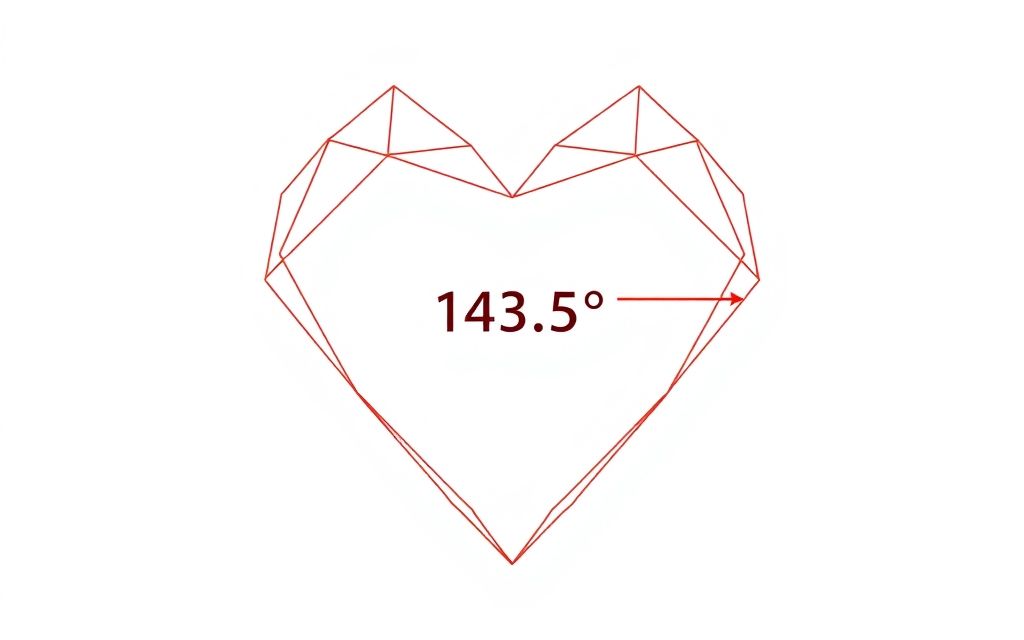I Love You in Numbers: Understanding Love Through Numeric Mystique
- Pine & Lime

- Mar 13
- 4 min read

In a world where feelings are often expressed through words, gestures, and even emojis, there is a hidden language that transcends traditional communicationâa language of numbers. The phrase "i love you in numbers" brings forth a compelling narrative that unites mathematics, art, and romance. Numbers such as 143 and 520 have elevated beyond their numerical value to symbolize declarations of love, while concepts such as the Golden Ratio and unique geometric angles reveal the innate connection between the logical and the emotional.
In this exploration, we delve deep into several numeric expressions that have taken on a life of their own as coded messages of affection. Their origins, mathematical elegance, and the interplay between numbers and emotions remind us why our hearts sometimes speak in formulas. This celebration of numeric romance encourages us to look beyond the obvious and appreciate how each digit can evoke passion.
The Essence of "i love you in numbers": The Magic in Every Digit
At its core, the phrase "i love you in numbers" invites us to rediscover the beauty of simple digits that have grown into a universal language of love. When we see numbers like 143 or 520, we are reminded that love can be encapsulated in the most unexpected formsâthrough counts, sequences, and harmonious ratios. This unifying theme reveals that deep, profound emotions can be expressed using the language of mathematics.

Whether you're sending a discreet numeric code in a text, marveling at the design of a customized keepsake, or choosing a perfect farewell gift for teachers, the magic lies in the precision and simplicity. Every calculated figure offers an artistic representation of the feelings that words sometimes fail to convey. This exploration encourages us to celebrate the small details that compile a larger, beautifully orchestrated expression of love.
143

The number 143 is perhaps one of the most iconic numeric love codes. Its origin lies in a simple concept: if you look at the phrase "I Love You," you have 1 letter in "I," 4 letters in "Love," and 3 letters in "You." This concise numerical shorthand has been embraced globally as a discreet and clever way to express affection.
What makes 143 so appealing is its simplicity and universal recognition. It doesnât require grand declarations; it simply encapsulates deep emotion in a few elegant digits. Like a minimalist piece of art, 143 manages to convey volumes without the need for a lengthy explanation. Whether shared in a quiet moment or inscribed on a personal memento, this numeric expression is a subtle homage to the beauty of succinct communication.
520

In Chinese culture, 520 has evolved into a modern symbol for "I love you." When pronounced in Mandarin as "wÇ Ã i nÇ," 520 sounds remarkably similar to the heartfelt phrase, making it a popular choice in digital expressions of love. Its phonetic charm has even led to May 20th being celebrated as an unofficial Valentine's Day in various regions.
The allure of 520 lies in its ability to bridge tradition with modernity. While it carries centuries of cultural association, it also embodies the spontaneity of today's digital interactions. A quick text or a simple gesture using 520 can convey a profound sentiment, proving that love isnât always about elaborate declarationsâit can be as immediate and simple as a well-chosen number.
143.5° â The Angle of a Heart

Imagine if our hearts could be measured like perfect geometric creationsâwhat if there existed an ideal angle that captured the tilt of love? The notion of 143.5° being "The Angle of a Heart" offers a glimpse into this whimsical perspective. While it may seem fanciful, this idea suggests that there is a precise, beautiful tilt that encapsulates the moment when love transforms our lives.
This conceptual angle blends the certainty of geometry with the unpredictable charm of romance. It reminds us that every intimate connection has its unique quality, measured not only in emotions but in the subtle shifts of our inner worlds. In this way, every heartfelt interaction becomes a finely crafted moment, as precise and special as a perfectly measured angle.
Conclusion
The phrase "i love you in numbers" invites us to rediscover how we express and understand love. Numbers, with their inherent precision and beauty, provide a universal language that transcends words to capture the essence of our most cherished emotions. Whether itâs the simple elegance of 143, the digital charm of 520, or the timeless perfection of the Golden Ratio, each figure carries its own storyâa story of connection, passion, and quiet wonder.
This exploration reveals that every digit has the potential to translate our deepest feelings into artful expression. Beyond the mathematics, there is a gentle reminder to appreciate the small moments that, when added together, form the mosaic of our lives.
So next time you find yourself captivated by a numeric code or the elegance of a balanced equation, remember the quiet power behind "i love you in numbers." Embrace the art of expressing affection through the language of digits, and let every calculation serve as a reminder that love, in all its forms, is an endless, awe-inspiring mystery waiting to be unraveled.

Comments